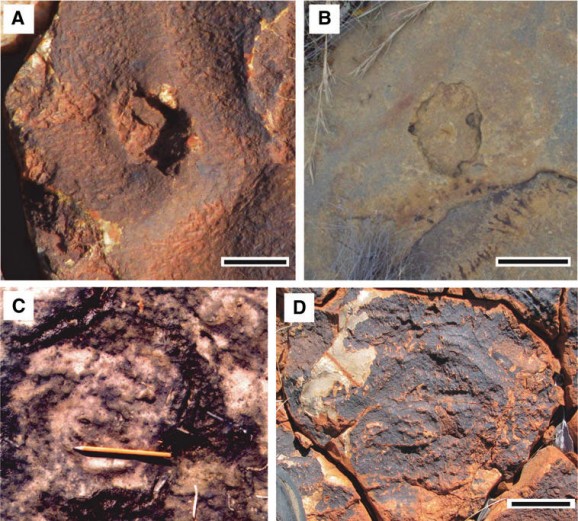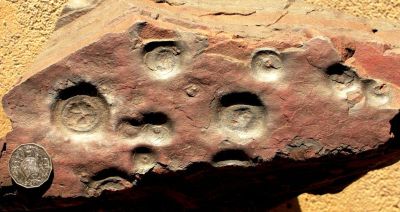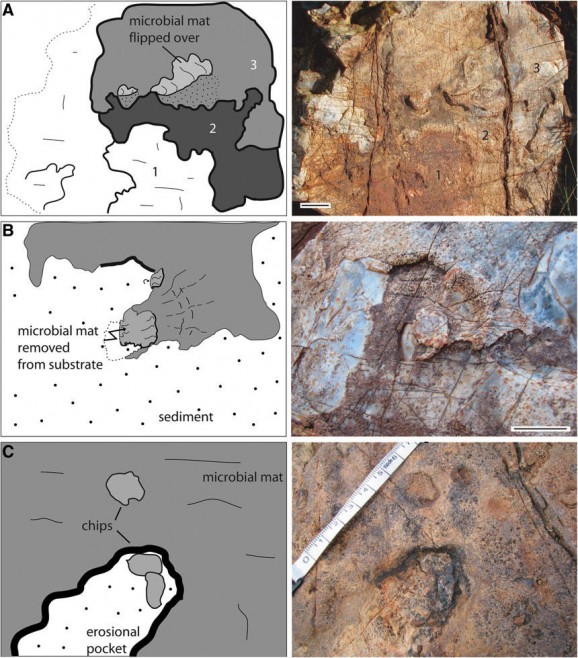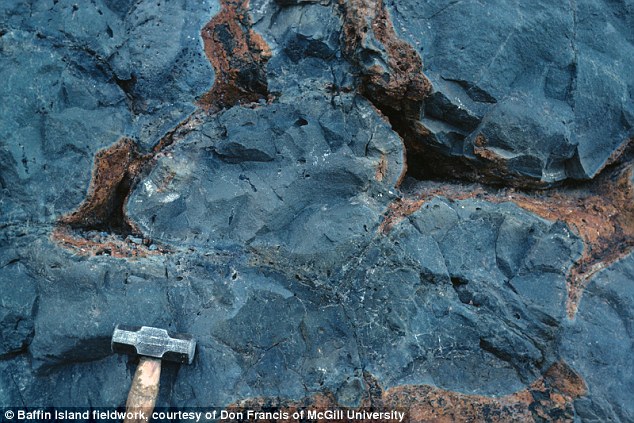Dr Nora Noffke from Old Dominion University in Norfolk and her colleagues have unearthed evidence of complex microbial ecosystems in 3.48 billion year old rocks of the Dresser Formation, Pilbara region.

Left: 3.48 billion-year-old macrostructures from the Dresser Formation in Pilbara, Western Australia. Right: possible modern equivalents. Scale bars – 1 cm. Image credit: Nora Noffke et al.
“The Pilbara region of Western Australia is one of the rare geological regions that provides insight into the early evolution of life on Earth,” explained Prof David Wacey from the University of Western Australia, who is a co-author of the paper published in the journal Astrobiology.

“Mound-like deposits created by ancient bacteria, called stromatolites, and microfossils of bacteria have previously been discovered in this region.”
“However, a phenomenon called microbially induced sedimentary structures had not previously been seen in rocks of this great age.”

Microbially induced sedimentary structures were created by microbial mats as the microbial communities responded to changes in physical sediment dynamics.
“A common example would be the binding together of sediment grains by microbes to prevent their erosion by water currents.”

“The significance of microbially induced sedimentary structures is that they not only demonstrate the presence of life, but also the presence of whole microbial ecosystems that could co-ordinate with one another to respond to changes in their environment.”

The paleontologists discovered the various microbially induced sedimentary structures in the early Archean coastal flats preserved in the Dresser Formation and found close similarities in both form and preservation style to sedimentary structures in younger rocks.

“The research extended the geological record of microbially induced sedimentary structures by almost 300 million years and showed that complex mat-forming microbial communities likely existed almost 3.5 billion years ago,” Dr Noffke concluded.
Source: sci.news








